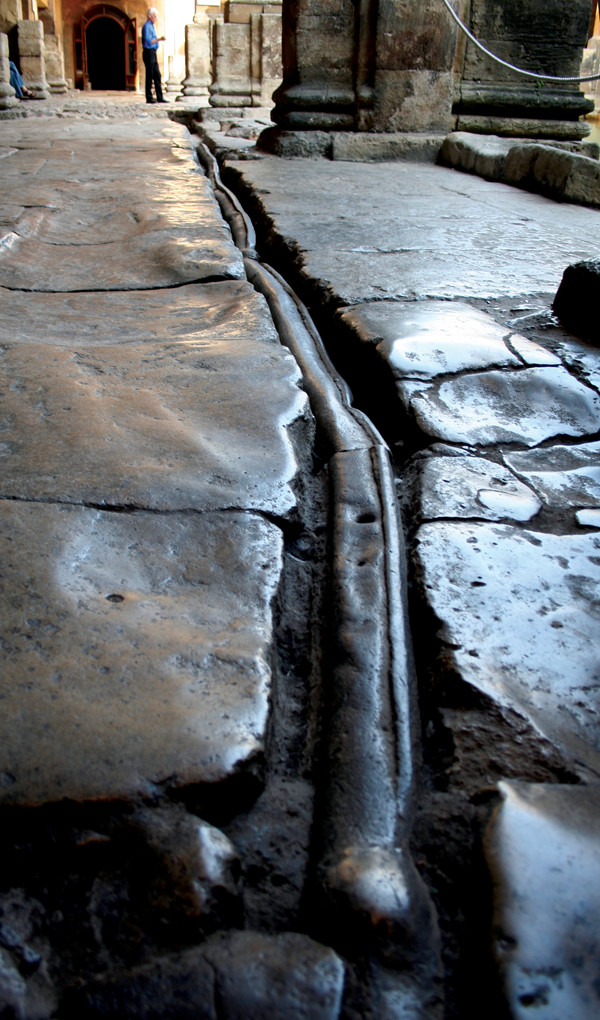
by Sara E. Pratt Monday, October 6, 2014

A lead pipe that supplied water to the Roman Baths in Bath, England. Credit: ©gds, CC BY-SA 2.0.
Ancient Rome was renowned for its vast and advanced plumbing system that brought freshwater to the city through viaducts and distributed it to the population via metal and clay pipes. But Rome’s civil engineers didn’t know about the neurological effects of lead in drinking water as we do today.
The notion that lead poisoning — caused by ingestion of water transported via lead pipes or by drinking wine from lead cups — led or contributed to the fall of the Roman Empire was first floated about three decades ago. But the idea has since been challenged as an overly simplistic explanation for what was a complex and wide-ranging historical event. Now, a new study provides further confirmation to that effect.
Hugo Delile, a doctoral student in geoarchaeology at the University of Lyon CNRS in France, and colleagues found that, at one time, Roman tap water might have had about 100 times more lead than local spring water. However, they conclude that such lead levels were unlikely to have posed a human health risk large enough to explain the downfall of a civilization.
The researchers obviously couldn’t directly measure lead concentrations of the water that flowed two millennia ago. But by measuring the anthropogenic lead in the sediments of an ancient harbor, which acted as a pollution trap, Delile says, they measured “the relative abundance of lead in these waters dated from 2,000 years ago.”
Delile and colleagues conducted isotopic analyses of soil samples cored from the Trajanic harbor basin at Portus, a maritime port on the Mediterranean coast southwest of Rome, and from the Canale Romano, a channel that connected the port with the Tiber River, which supplied about 3 percent of Rome’s drinking water. They also tested samples of ancient Roman lead-containing water pipes called fistulæ that dated from the first and second centuries A.D.
The researchers compared the changing levels of lead in sediments over time, which indicated that the water pipes increased the amount of lead in drinking water, above natural background levels, “by a factor of about 40, 14 and 105 for the Early Empire, Late Empire and High Middle Ages, respectively,” the team wrote in Proceedings of the National Academy of Sciences.
“The inferred increases of lead in the water of the Roman distribution system unquestionably attest to general lead pollution of Roman drinking water,” the authors wrote, “but the lead concentrations at issue are unlikely to have represented a major health risk.”
The authors further suggested that the varying lead levels in the sediments could reflect alterations or damage to the waterworks that occurred as Gothic and Byzantine forces struggled for control of the port.
© 2008-2021. All rights reserved. Any copying, redistribution or retransmission of any of the contents of this service without the expressed written permission of the American Geosciences Institute is expressly prohibited. Click here for all copyright requests.